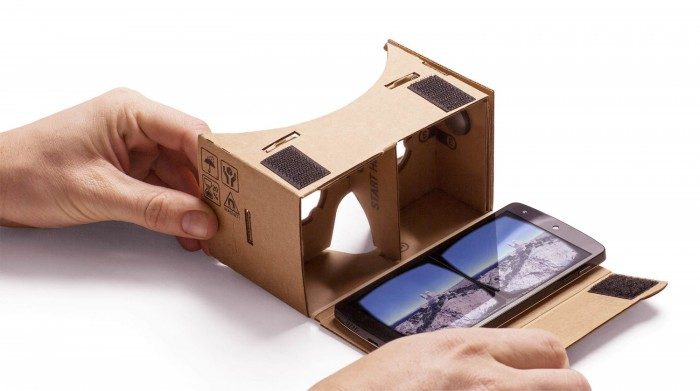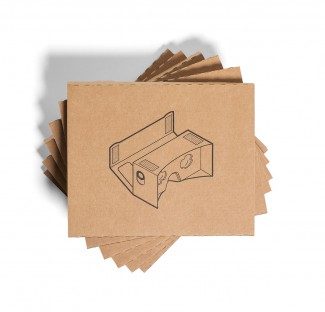Today Google is getting serious about Cardboard. The simple VR smartphone adapter debuted at the company’s annual I/O 2014 conference earlier this year. What started out as a ‘20% project’, essentially a hobby, is turning into something significant.
See Also: More Than You Want to Know About Google Cardboard
Cardboard started as a “20% time” project—Google’s famous perk that allows employees to spend 20% of their time on hobby projects—by David Coz and Damien Henry at the Google Cultural Institute in Paris. It would seem that Google initially underestimated the interest that Cardboard would generate, and today it’s safe to say that it’s graduated from hobby to strategic project. As such, they’ve made a big round of updates to their entire Cardboard project and presentation today, starting with a total revamp of their official Cardboard site—and they’re hiring.


For users, the company is now curating Cardboard-capable apps in a special section of the Google Play Store.
The company had handed out some 10,000 Cardboard units to developers at I/O 2014 when the project was first revealed, but they declined to actually sell them, instead providing DIY plans for people to build their own. After companies like DODOcase stepped in and demonstrated serious demand, Google is now connecting users directly with third-party Cardboard manufacturers for those who want to buy instead of make.


- User head tracking
- Side-by-side stereo rendering
- Detecting Cardboard-only user inputs such as the magnetic trigger
- Automatic stereo configuration for a specific Cardboard model
- Distortion correction for Cardboard lenses
- An alignment marker to help center the screen under the lenses
- A settings button that links to the Cardboard app for managing headset parameters
“We’re keeping the hardware and software open to encourage community participation and compatibility with VR content available elsewhere,” the company notes on their SDK page.
And for creators of Cardboard, Google has updated their open-source Cardboard instructions. The new instructions provide templates to create cardboard on scales big and small with die-cutting, laser cutting, or even scissor cutting.
Now Hiring
On Google’s official blog, the company notes that more than 500,000 Cardboard units have been shipped. I’m fairly certain that this includes figures from third-party manufacturers, but it wasn’t specified.
Now that demand has been suitably demonstrated, the biggest indicator of Google’s newfound stance on Cardboard is that they’re hiring. Google has just posted five full time positions for Cardboard / Virtual Reality:
- Motion Designer, Cardboard and Virtual Reality
- Interaction Designer, Cardboard and Virtual Reality
- Visual Designer, Cardboard and Virtual Reality
- Software Engineer, Mobile Applications (Cardboard and Virtual Reality)
- Software Engineer, Systems and Applications (Cardboard and Virtual Reality)
Virtual Reality (VR) is rapidly evolving as an important new area in personal computing. The Google VR team is a fast moving group of engineers, designers, and research scientists tasked with building the foundations for great VR, developing VR apps and prototyping novel, delightful user experiences. The project started as a 20% project with Google Cardboard. It has since evolved into a vibrant team of full-time VR enthusiasts at Google.
Google is laying the groundwork not just for Cardboard, but for plenty of other VR smartphone adapters that are already available. It’s clear they they want Android to become the place for mobile VR. What will be interesting to see is how the relationship between Cardboard and Gear VR pans out. Both run on Android, but neither are compatible with one another.

